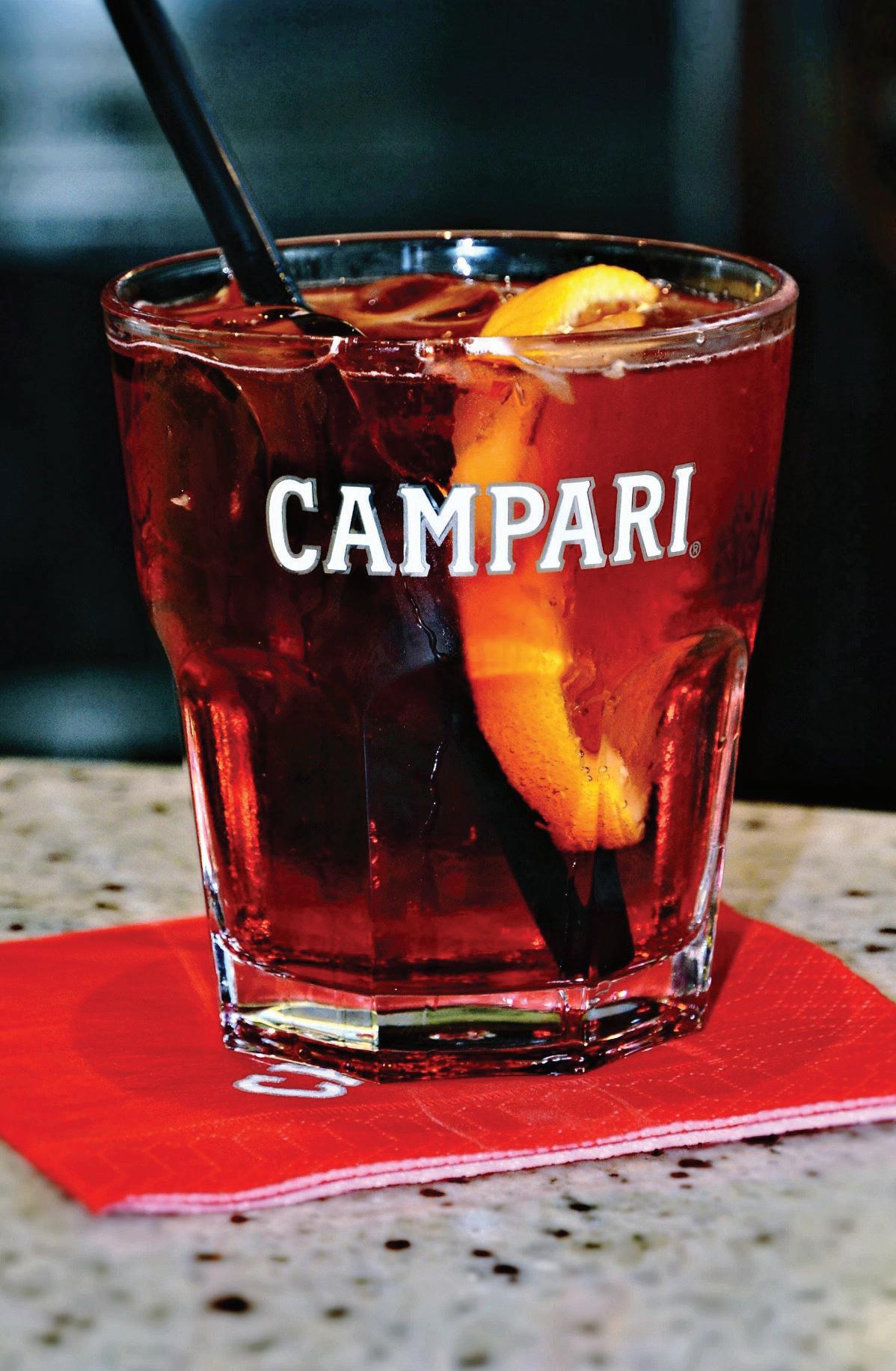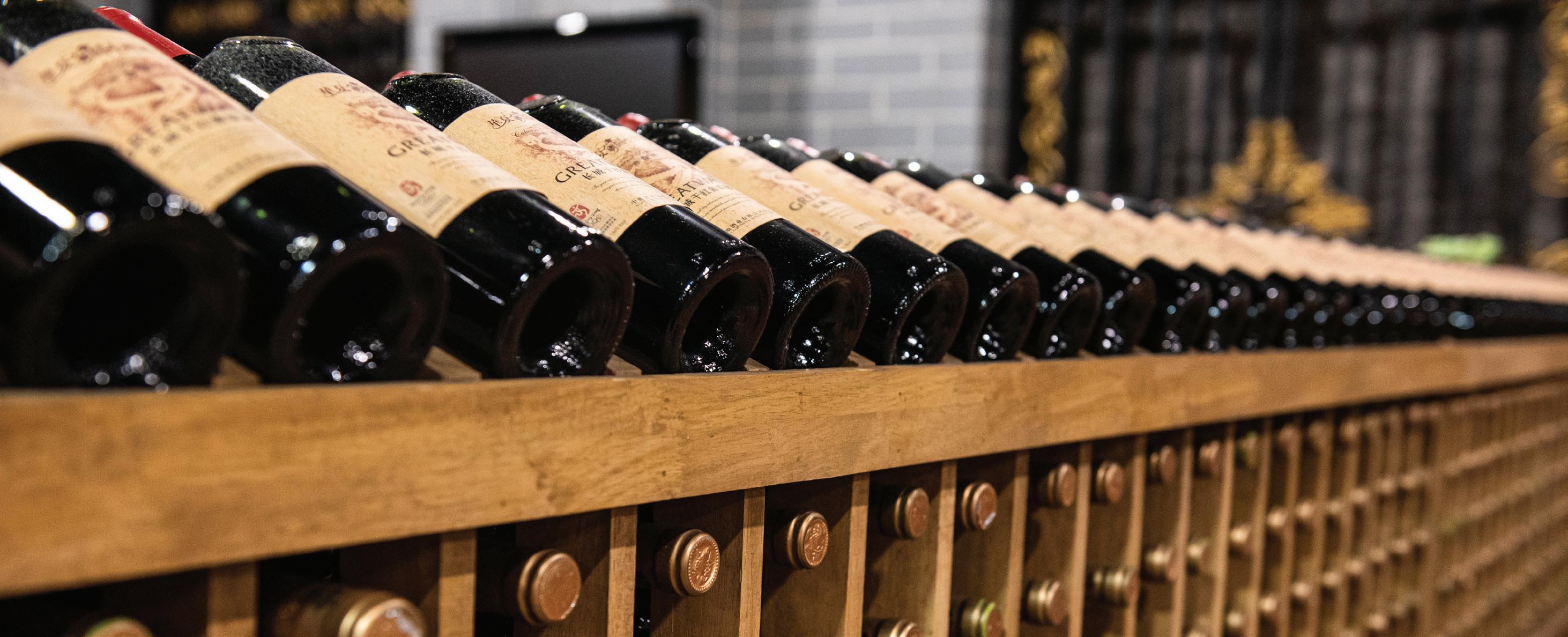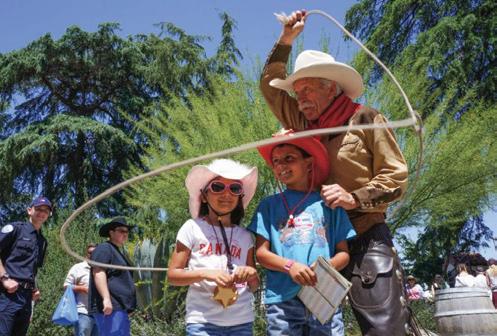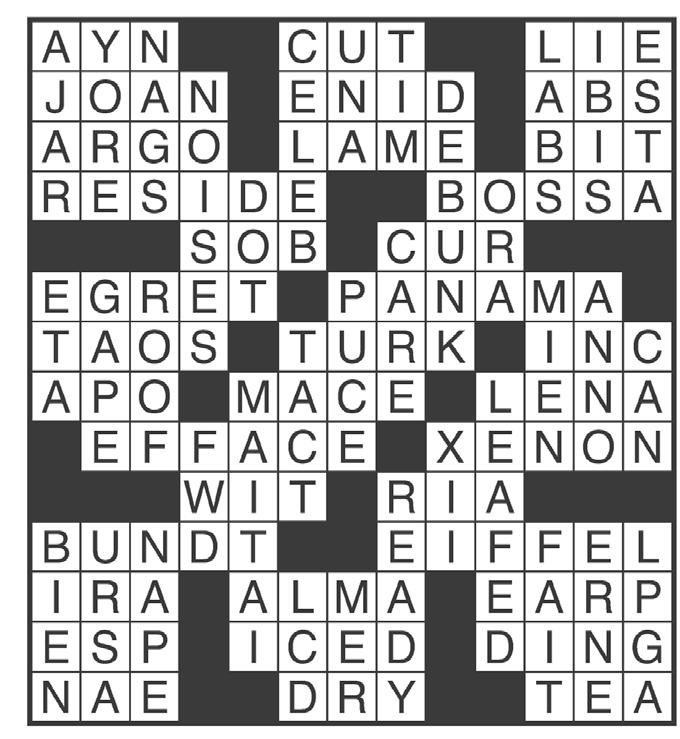
























It’s basically Dry January with a splash.
By Mackenzie Filson Delish.comThe new year often finds us with our cup runneth over … literally. With all the champagne-soaked holiday parties and late nights (with maybe a few too many nightcaps), a booze-free January starts to look pretty appealing. But what if Dry January sounds, well, a bit too dry? Enter: “Damp January,” a lower-ABV dive into the sober-curious life.
It’s basically what it sounds like. It’s Dry January (where one foregoes alcohol for the entire month), but with a splash, so to speak. Damp January is a more a moderate approach to the challenge, allowing for the occasional, mindfully chosen drink.
Many use Damp January as a way to “reset” any drinking habits that often develop during November and December, when being full of holiday spirit turns, well, pretty literal. And it’s not only for just the month of January.
According to Bacardi Drinks Trends 2023 report, “Millenials and Gen Z especially are joining in on the the non-alcoholic and low-ABV (NoLo) experimentation movement, with up to 23% becoming ‘blenders’ or those who switch between NoLo and full-strength cocktails on the same occasion in 2023.”
Maybe you’ve noticed that your usual glass of wine with dinner sometimes turns into three. Damp January is less stringent way to do a self-assessment when it comes to those occasional drinks (and resulting headaches). After all, the average person spends 252 hours hungover — every year. No matter if 2022 found you on the lower end of that number, any amount of alcohol reduction is incredibly beneficial to one’s health.
“The concept of Dry January and all the various food challenges people do in January can create a sort of all-or-nothing approach,” says registered dietician Samantha Cassetty. “And that can actually be stressful for people if they don’t complete the full 30 days … I think if you aren’t using alcohol to cope, you can use that time instead to assess what role alcohol plays for you [with a Damp January approach].”
With the goal for the month being awareness (and less focus on “willpower”), there’s a larger margin of success in pursuing a Damp January. And the health benefits of going damp are not for nothing either.
Cassetty says that while eliminating drinking altogether will help improve cortisol levels, sleep quality, and even digestion, even those occasional glasses of wine are seen as a healthy part of the
We are living in the year of the Negroni, which has been getting a lot of space on social media.
However, if you look at the lineage of this viral drink, you find that the Americano is just as sophisticated and even easier to make. It’s lightly alcoholic and bubbly.
The Americano, the predecessor to the Negroni, is a classic beverage with Milan roots dating back to 1860s Italy. It was created at Caffe Campari, the birthplace of Campari, and all the drinks it has inspired. It’s a simple drink with just three ingredients: Campari, club soda, and the best sweet vermouth you can find, topped with an orange slice.

1 1/2 oz. Campari
1 1/2 oz. sweet vermouth
2 to 3 oz. club soda
Sliced orange wheel, for serving (optional), Directions
Fill a highball glass with ice. Pour Campari and vermouth over.
Top with club soda and serve with orange wheel, if using. (Delish)
popular Mediterranean diet (that being said, if you’re not already an alcohol drinker there’s no benefit in starting).
Generally speaking, Damp January definitely benefits those of us who identify as low-to-moderate drinkers (“moderate drinking” is defined as less than seven drinks per week for women, and less than 14 drinks per week for men). If you’ve found your drinking has gotten in the way of your life, or is of consistent concern, a truly dry approach might be the best route to take.
Whether you’re mixing up a cheeky nightcap at home or joining friends for an after-work drink, there are tons of mocktail mixology inspo out there to make sure you’re never left empty-handed. And we’re not talking about just plain soda water, either. Thankfully, there are plenty of options, whether you’re in the mood for canned mocktails, low-ABV spritzes, or non-alcoholic beers.
The non-alcoholic spirits market is hardly homogenous either. With complex flavor notes all their own, these zero-proof spirits can capture the fun hedonism of just a simply well-tasting beverage, zero hangover guaranteed.
No exaggeration, these non-alcoholic “spirits” will make you do a double-take, especially if you love the signature burn of alcohol-forward cocktails like I do. Brands like Ritual Zero Proof, Mon-
day Spirits, and Lyre’s all offer flavorful additions to any bar cart, damp or dry.
Personally, I’m a huge fan of the cozy campfire smokiness of Monday Spirit’s mezcal alternative with spicy ginger beer, and the peppery kick of Ritual’s whiskey alternative served with crushed ice, Coke, and a squeeze of lime, and Lyre’s Italian Orange on the rocks for aperitivo hour.
Mixing up any of these “spirits” in a fun glass (like a coupe, snifter, or highball glass) is also an easy way to rid yourself of any drink-related FOMO and make the drink itself feel like a real event. Similarly, low-ABV spritz-style cocktails are also a great way to have a cheeky cocktail experience with way less alcohol. Many members of Team Delish are big fans of cutting Aperol with lemonade and sparkling water, Amaro with tonic water and lemon, and bitters with soda water.
Maybe wine is more your drink of choice? Now’s the time to get acquainted with de-alcoholized wines (and yes, you read that correctly!). My favorite non-alcoholic winemaker, Surely, has something for everyone, like their crisp sauvignon blanc, a bubbly canned red blend, and a sparkling rosé that’s truly all-day-proof.
No matter what you choose to do after your month, doing a Damp January will prove that there are tons of fun, deliciously complex mocktails for mixing up any night of the year. We’ll see you on February 1st, bitters and soda in hand.
Purchasing wine is always an exciting event, especially when you are new to the scene. Any savvy shopper can recall that feeling of sheer exhilaration that stems from not knowing quite what you are going to get.

For beginners, it’s about choosing whether to go with white or red, while novice shoppers tend to dance around the differences between Cabernet Sauvignon and Merlot. Finally, there are the true connoisseurs who relish in the interpretation of body, age, and everything in between. If you are wondering what any of those things mean, consider a few of these wine buying tips before your next acquisition.
When it comes to wine, a little education goes a long way. At the very least, you should understand the main differences between whites and reds. Then, read about the characteristics of each of the main grape categories.
If you fancy sweeter flavors, hone in on sparkling wines and common dessert varieties. If you want a more full-bodied or dry flavor, go for darker reds. Keep in mind that no two manufactures make wine the same, so you might end up favoring a particular producer.
2.
Knowing a few pairing methods is a great way to learn about different types of wine and discover where your preferences lie. Champagne complements salty dishes while a Pinot noir works well with earthy flavors. Whether you eat a lot of fish or bake a lot of sweets, your wine experienc -
es will be a much more enjoyable experience if you learn how to pair different flavors.
Just like every other product on the market, wine follows technology. Take advantage of one of the many wine-related smartphone apps available to you. These resources provide an abundance of useful information as well as great tips for your specific event or preference.
Also, don’t be afraid to open these up while you’re browsing in the store. It can be one of the most vital tools when you are standing in front of those intimidating shelves filled with hundreds of different brands.
Wine labels are surprisingly simple, so take a minute to learn the ins and outs. In America, all bottles must include the producer, brand name, alcohol content, net content, sulfite declaration, and a government warning.
Most bottles will also indicate the type of wine. You will find that many producers include useful extras like origin information, special color or flavor designations, and even food pairing suggestions. Taking the time to read a wine label before you buy it can provide you with the much-needed bits of insight required to pick the perfect bottle. It only takes a few seconds!
You should ask for samples as soon as you enter the store. This is a great way to gear up your mind and your tastes. It also helps you gain real life experience and discover wines that you are less familiar with. Consider a verbal recommendation or an advertised special. After all, there’s a definite reason why the travel industry offers customized vacations focused entirely around
the very hobby of wine tasting.
6.
Of all the wine buying tips, this one is the most overlooked. Your retailer is there to offer suggestions, answer questions, and guide you to the right purchase. Try to establish a relationship with the staff members.
7.
It’s also a good idea to be familiar with the way your store operates. A lot of retailers arrange their American bottles according to the grape category, while foreign varieties are usually categorized by country. In most cases, reds are kept separate from whites. Knowing the specific layout helps speed things up.
So, what do you do when you finally take your prized bottle home? You either enjoy it or learn how to store it for later. Most commonly sold wines are meant to be consumed within a few months or years after they are purchased. Therefore, unless you are interested in maturing some of the more rare wines, you don’t have to fret about storage. In general, most bottles keep best at a temperature between 45° F and 65° F. A wine cooler is the easiest way to store your bottles. But, as long as you avoid drastic temperature changes, heavy shaking, and find a dark area away from direct sunlight, your wine should be ok.
Buying wine shouldn’t be a daunting task. In fact, it’s a cherished hobby for people worldwide. Think of it as your next museum excursion. Whatever your reason, consider some of these wine buying tips, especially if you’re new to the scene. A little knowledge can save you money, open up opportunities, enrich your experience, and make you a confident buyer.
 By Ryan Nicklin For The Signal
By Ryan Nicklin For The Signal
Sleep experts at Best mattress brand analyzed multiple scientific studies that have been medically reviewed and found three fruits that aren’t just good for improving your health but also improving your quality of sleep.
With 35% of America suffering with symptoms of insomnia there are growing nationwide health concerns. This is due to the range of mental and physical issues that can arise from a lack of sleep.
Diet and sleep are both complex, and every individual responds differently to foods and other remedies that are supposedly good for sleep. However, through meticulous testing these foods have been proven to help give people a great night’s sleep.
Tart cherries (Montmorency cherries) or tart cherry juice have been found in studies to have great sleep benefits. In one study. It was discovered that consuming two one-cup portions of tart cherry juice daily resulted in the ability to fall asleep faster, more overall sleep time and significantly less awakenings. Thus, the outcome is overall increased sleep efficiency. The same effects have been reported in other tests as well.
The benefits mentioned in these studies may come from the fact that tart cherries have higher concentrations of melatonin, which is a hormone that regulates circadian rhythm (the natural, internal process that regulates the sleep–wake cycle) and promotes healthy sleep.
Tart cherry juice also increases the bioavailability of tryptophan which has been foundd to decrease the time taken to fall asleep. The enzymes within the cherries keep the tryptophan in the body longer so not only do you fall asleep quicker but stay asleep longer.
It’s important to note that tart cherry juice can contain added sugar, when too much sugar is incorporated into a diet can be harmful, so it’s recommended to choose no added sugar options if available. However, the pure fruit is full of antioxidants, vitamins and fiber so can offer many other health benefits such as

• Reduces muscle soreness
• Reduces inflammation
• Improves brain function
• Strengthens immune system
When adding the fruit or the juice into your bedtime routine it’s advised to consume daily in the morning and 1-2 hours before bedtime for optimal effect.
Kiwifruit are well known for their significant number of nutrients and antioxidants as well as high levels of fiber, folate and potassium. However beyond just their health values, kiwis have been said to have sleep inducing qualities, allowing those who eat it before bed to fall asleep faster and for longer. It’s been hypothesized that the high antioxidant capacity, serotonin and folate content of kiwifruit may contribute to the observed sleep benefits of kiwifruit consumption.
Serotonins one of the key chemicals that is found in high doses in kiwis. It is an end product of L-tryptophan metabolism, which is related to rapid eye movement sleep and low levels may cause insomnia. Folate deficiencies can also lead to symptoms of insomnia and fatigue, thus the levels of folate in kiwis could improve sleep quality for those who suffer with sleep conditions. It’s also been suggested that the anti-inflammatory antioxidants in kiwis, such as vitamin C and carotenoids, may be partly responsible for their sleep-promoting effects as well.
The research shows in this study that when kiwi was consumed over a period of 4 weeks it was found to improve sleep onset, duration and efficiency. Although it’s been noted more research is currently required into kiwis, the current studies suggest that eating 1-2 kiwis an hour before bed may help people to fall asleep faster and stay asleep longer.

Along with being a good source of magnesium, vitamin B6, and protein, Bananas are widely known for having a lot of potassium. The hormones serotonin and melatonin that are
produced as a result of these nutrients are key to falling asleep faster and staying asleep longer.
Tryptophan, an important amino acid that can be found in bananas, has been shown to enhance the quality of sleep. Since tryptophan cannot be produced by the body, eating a banana helps to increase levels of the amino acid. Serotonin is a neurotransmitter that promotes relaxation by slowing down signals to nerve cells, and tryptophan aids in the production of serotonin. Melatonin, a hormone that induces sleep and regulates our circadian rhythm, often known as the sleep-wake cycle, is regulated by serotonin.

Bananas are also a good source of magnesium which supports a healthy circadian cycle, the body’s internal clock. Magnesium also impacts the hypothalamus, a region of the brain that regulates the pituitary and adrenal glands. These glands enhance the stress hormones when magnesium levels are low. A banana can be the ideal food to help you relax before bed because stress and worry are frequently linked to sleep issues including insomnia.
Given that bananas are among the top sources of potassium, it is important to note the health advantages of potassium. Low potassiumlevels make your muscles rigid, which leads to cramps and spasms, making it difficult to get a good night’s sleep. A banana’s additional potassium aids in successfully stopping and starting muscle contractions, reducing the likelihood that cramps and spasms may keep you awake.
The combined nutrients and chemicals, and impacts these have on the body, make bananas a great bedtime snack to help those who struggle to sleep.
These foods are not only delicious but can be incorporated easily into any diet for kids and adults, with studies and research proving that it’s not just quality of sleep that is enhanced but overall health as well.
Diet can be an excellent tool in managing mental and physical health issues and it has been extensively documented by researchers and medical professionals, in many cases diet being proven to offer great natural remedies to health issues including sleep. Although it’s worth consulting your GP before making any drastic changes to your diet.”
Nonprofits in the Santa Clarita Valley contribute to the quality of life in the SCV by providing needed services and resources. Many of the nonprofit fundraisers also contribute to the vibrant social scene by providing exciting and fun events where residents can mingle while supporting the work of these important organizations.
The COVID-19 pandemic saw the cancellation of nearly all nonprofit fundraising events. While some events were able to continue as “virtual” events, most nonprofits were severely impacted by the loss of their signature fundraisers.
Steve Portaro, one of the organizers of the Santa Clarita Valley Charity Cook-off with event founder Nicole Stinson, said the pandemic is one of the reasons he decided to start the SCV Non Profit Event Calendar page on Facebook.
The page includes a list of upcoming events as well as posts from SCV nonprofits with information and promotional flyers for fundraising events.
“I was surprised at how many people had never heard of our event,” he said. “We started the calendar to help all nonprofits get the word out. We realized that the true ambassadors of charity work are other charities.”
Portaro and Stinson felt that reaching out to other SCV nonprofits to be involved with the SCV Non Profit Event Calendar would help everyone.

“It is an opportunity for all the charities to come together and help each other by spreading the word of mouth together,” Portaro said. Portaro said the number of nonprofits in the SCV demonstrate the need that exists.
“It’s super fulfilling to give back and very rewarding,” he said.
Since pandemic restrictions have been mostly lifted in the past year, many, but not all, of our favorite events have returned, or are returning, for SCV residents to enjoy and support.

This calendar is far from complete for 2023 as many events are still in the planning stages. Here is a list of nonprofit, and other events, on the horizon as of press time. Mark your calendars!
Feb. 5-10 Inaugural SCV Restaurant Week. feedSCV, www.scvrestaurantweek.com.
Feb. 10 Empowering HeArts. Single Mothers Outreach, singlemothersoutreach.org.
Feb. 23 Centennial Celebration Awards and Installation. Santa Clarita Valley Chamber of Commerce, www.scvchamber.com/events/centennial-celebra tion-awards-installation.
Feb. 26 13th Annual Mardi Gras Madness 5K/10K/1K. Students Off And Running (SOAR) of Santa Clarita, runsignup.com/Race/CA/Valencia/ MGM5K

Feb. 26 Soup for the Soul. Bridge to Home, btohome.org.
March 3 All in for Family Promise Second Poker Tournament and Paint and Sip Fundraiser. Family Promise of SCV, www.familypromisescv.org.
March 11 31st Annual Silver Spur Celebration honoring Randy Moburg and Mitzi Like. College of the Canyons Foundation, www.canyons.edu/ad ministration/foundation/2023-silver-spur.php.
March 25 Women in Service. Zonta Club of SCV, www.scvzonta.org/women-in-service.
April 16 The Wine Affair “Wine, Beer and Cheer” presents Brazilian Carnival Supporting the Fight Against Human Trafficking. Soroptimist International of Greater SCV, www.sigscv.org.
April 22-23 Cowboy Festival. City of Santa Clarita, cowboyfestival.org.


April 28 The 39th Annual Teacher Tribute. Santa Clarita Valley Education Foundation, www.scvedu cationfoundation.org.
April 30 Gentlemen for a Cause. Soroptimist International of Valencia, sivalencia.org.
April 30 Spring Festival Art Show/Sale at Le Chene. Santa Clarita Artists Association, www.santa claritaartists.org.
May 5 Santa Clarita Valley Man and Woman of the Year Recognition. Santa Clarita Valley Man and Woman of the Year Committee, www.scvmanwoma noftheyear.org.
May 6 Relay for Life SCV. American Cancer Society, www.facebook.com/SCVRelay.
May 7 Taste of the Town. Child & Family Center, www.childfamilycenter.org/events/taste-of-thetown.
May 13 Sweet Side of Education Chocolate Walk. Santa Clarita Valley Education Foundation, www. scveducationfoundation.org.
May 20 Hoedown for Hope. Circle of Hope, www. circleofhopeinc.org.
June 3 Boys & Girls Club Auction. Boys & Girls Club of Santa Clarita Valley, scvbgc.org.
July 4 Santa Clarita Fourth of July Parade. Santa Clarita Valley Fourth of July Parade Committee, www.scvparade.com.
July 4 Rotary Club of Santa Clarita Valley Annual Pancake Breakfast. Rotary Club of SCV, www.scvrotary.com.
TBD Third Annual Cars Under the Stars. WiSH Education Foundation, www.wisheducationfoundation.org.
Aug. 26 Heart of the West. Carousel Ranch, www. carouselranch.org.
Sept. 8 Cocktails on the Roof. WiSH Education Foundation, www.wisheducationfoundation.org.
TBD 19th Annual Tea. Circle of Hope, www.circleofhopeinc.org.
Nov.3 VIA Bash. Valley Industry Association, www.via.org/events.
Nov. 4 2023 Touch-A-Truck. Santa Clarita Valley Education Foundation, www.scveducationfoundation.org.
Nov. 5 2023 Fashion Show. Soroptimist International of Greater SCV, www.sigscv.org.
TBD Festival of Trees. Boys & Girls Club of Santa Clarita Valley, https://scvbgc.org.

TBD 40 Under Forty. JCI Santa Clarita, https:// scv40underforty.com.
TBD SCAA 34th Annual Fall Classic. Santa Clarita Artists Association, https://www.santaclaritaartists.org.
TBD Holiday Home Tour. Henry Mayo Newhall Hospital Foundation, www.henrymayo.com.
TBD Agua Dulce Women’s Club Annual Parade of Tables. Agua Dulce Women’s Club, https://adwc. org.




The City of Santa Clarita prides itself on protecting the local environment and the City’s natural beauty, and in order to remain environmentally conscious and compliant with California state law, there are two big changes coming for all Santa Clarita residents beginning on July 1, 2023. This includes the transition to a new residential waste hauler and the implementation of a state-mandated organics recycling program. Let’s take a closer look at what these changes mean and how you, as a resident, can prepare.


The first change relates to the City’s waste hauler. The City currently has two different waste haulers that handle residential and commercial customers separately. However, those agreements are set to expire on June 30, 2023. In anticipation of these expiring agreements, the City went through a competitive bid process and has awarded Burrtec Waste Industries (Burrtec) the right to provide waste hauling service for both residential and commercial customers beginning July 1. While the City

and Burrtec are working closely to ensure a smooth transition, it is important to note that all Santa Clarita single-family homes will automatically have their existing waste carts replaced with new Burrtec carts once the new service begins. These new carts will also follow a state-mandated color scheme, which requires black carts for garbage, blue carts for recycling and green carts for organics.
The second change relates specifically to the green organics cart. With new state laws designed to reduce harmful methane emissions that come from organic waste, the City is required to implement a state-mandated organics recycling program. That means, beginning July 1, both loose green waste (yard waste) and bagged food waste must be disposed of in the same green organics cart. To help with this change, Santa Clarita single-family households will receive new, kitchen food waste pails that can be used to collect food waste in their home, which includes common expired foods like fruits, vegetables, meats, dairy, breads, plate scrapings and other non-consumable foods. It is important to note that food waste must be disposed of in a plastic bag in the new green cart, while yard waste must be kept loose and not contained in a bag.
While both of these changes are significant and affect all Santa Clarita residents and businesses,



our top priority is to keep you updated leading up to the July 1 transition. In the meantime, I strongly encourage you to watch our informational video series titled “Trash Talks,” where City staff will provide timely information with episodes covering a range of relevant topics including organics recycling, an overview of trash cart colors, a demonstration of the new food waste pails and much more. Updates will also be sent by mail in addition to being posted to the City’s and Burrtec’s social media pages. You can follow both @ GreenSantaClarita on Facebook and @BurrtecSCV on Facebook or Instagram to get the latest updates.
We know that many residents will have questions, which both City and Burrtec staff are prepared to help answer. While change isn’t always easy, the collective action of households participating in these important programs will help preserve and maintain the natural beauty of Santa Clarita for generations to come. To learn more about sustainability and all things green in the City, please visit GreenSantaClarita.com.
Ken Striplin can be reached at kstriplin@santaclarita.com. The views expressed in his column are those of the City and do not necessarily reflect those of The Signal.



Colder, rainy days call for a little comfort. Cozying up with a hearty meal on brisk winter evenings can help fight off the chill while savoring favorite flavors alongside the ones you love.

When your family needs a warm-up on those cold days, consider chowders. They are loaded with the flavors of winter comfort, it’s a filling meal that makes enough for a crowd so no one goes hungry.


Recipe courtesy of the North Carolina SweetPotato Commission
Servings 6
2 large North Carolina sweetpotatoes, baked
1 small onion, 1/4-inch diced
2 tablespoons olive oil
1 quart chicken or vegetable stock
2 cups cooked chicken, cubed
1 1/2 cups whole corn kernels
2 teaspoons minced jalapenos
1/2 cup heavy cream
1 teaspoon salt chopped scallions, for garnish Peel baked sweetpotatoes; discard skin and puree. In soup pot, saute onion in butter until softened.
Add pureed sweetpotato and stock, as desired. Bring to boil, reducing liquid slightly. Add chicken, corn, jalapenos, heavy cream and
salt. Simmer 10 minutes.
To serve, ladle into bowls and garnish with chopped scallions. (Family Features)
Prep time 15 minutes
Cook time 25 minutes
Servings 5
2 tablespoons olive oil
1 large Dole Onion, chopped
2 garlic cloves, minced
1 medium Dole Russet Potato, peeled and diced
1 teaspoon ground cumin
1/4 teaspoon smoked paprika
1 package (14.4 ounces) DOLE® Chopped BBQ Ranch Salad Kit
2 ears corn, kernels cut from cob (about 2 cups)
4 cups water
1 cup milk salt, to taste pepper, to taste shredded sharp cheddar cheese, for garnish
In large soup pot over medium-high heat, heat oil. Add onion, garlic and potato; saute 2 minutes. Add cumin and paprika; cook
5 minutes, stirring occasionally. Add salad greens from kit to pot and cook 2 minutes, or until lettuce is wilted.
Add corn and water to pot and bring to boil. Reduce heat; cover and simmer gently 10 minutes. Add milk and dressing packet from kit; season with salt and pepper, to taste. Simmer uncovered 5 minutes.
Ladle into bowls and garnish with shredded cheese and chips packet from kit.
‘The Son’ 1/2 (out of four)
Sony Pictures Classics presents a film directed by Florian Zeller and written by Zeller and Christopher Hampton. Rated PG-13. In theaters.
Shocking.
Given that director and co-writer Florian Zeller’s “The Father” was a powerful and nuanced and creatively presented original work, with Anthony Hopkins winning an Oscar for his moving portrayal of a man with advancing dementia, it’s truly shocking how Zeller’s “The Son” is such a tone-deaf, emotionally manipulative, leaden stumble into the abyss.
While not a prequel or in any way related to “The Father,” this is part of a Zeller trilogy of plays, which also include “Le Pere” (which was adapted into “The Father”) and “The Mother.” Perhaps “The Son” was an effec-
tive stage drama when it premiered in Paris in 2018 and was later translated into English and presented in London a year later, but as a work of cinema, it’s sorely lacking in insight, character development and authentically earned emotion.
Plot twists are telegraphed scenes in advance. The dialogue is filled with speeches and turns of phrases that sound overwritten. Perhaps most egregious of all, we’re hit with an epilogue that toys with the viewer’s emotions in an almost cruel manner.
Hugh Jackman delivers an earnest performance and almost manages to overcome the screenplay’s shortcomings as Peter Miller, a successful and workaholic New York lawyer who’s on the verge of landing a dream job as a political consultant in Washington, D.C. Career-wise, things couldn’t be better, and Peter’s home life is also on the upswing, now that he’s living in Brooklyn with his beautiful and quite younger partner, Beth (Vanessa Kirby), and they’ve recently welcomed a newborn son.
All seems idyllic — until the moment when Peter’s ex-wife, Kate (Laura Dern), shows up at the door in a state of panic, informing Peter that their 17-year-old son, Nicholas (Zen McGrath), has been ditching school for a month and has been cutting himself. Kate tells Peter that Nicholas’ cold and distant behavior scares her, and it’s decided Nicholas will come live with Peter for a while.
Of course, that means Nicholas is coming to live not only with his father but with the woman he blames for wrecking his parents’ marriage, and his infant half-brother. Poor Beth correctly surmises she’s going to be the one at home with Nicholas for long stretches of time, while Peter continues to work long hours in Manhattan.
Lensed in somber and depressing tones with ominous shadows everywhere, “The Son” repeatedly engages in heavy-handed messaging, e.g., when Peter notices a new intern at the firm and clearly wishes his son could be like this bright and ambitious and well-adjusted young man, as he watches him walk down the hallway. Equally off-base are the rare light moments between father and son, as when Peter joins Nicholas for some cereal as they sit and watch cartoons on a Saturday night, as if Nicholas is 7 years old and not 17. (Not to mention the obligatory flashback scenes to that one sun-dappled vacation when Nicholas was a little boy
and seemed happy and welladjusted.)
Even though the warning signs are everywhere that Nicholas is deeply troubled and in need of professional help, Peter and Kate both act as if they’ve never heard of depression. It’s as if “The Son” is mired in the 1940s and not the present day.
The many Major Confrontational Scenes aren’t much better. A typical exchange between father and son:
“You have to do something, you can’t just let things go like this.”
“I can’t deal with any of it. … I don’t know how to describe it.”
“Just tell me in your own words.”
“It’s life. It’s weighing me down.”
“What is it about life that isn’t working for you?”
This conversation, for one.
The most effective scene in “The Son” takes place in the mansion of Peter’s father (Hopkins, in a blistering cameo), where old wounds are reopened and Peter once again complains about his father abandoning their dying mother, and his father tells him to “just f---ing get over it.” At least Peter’s father is willing to acknowledge things were terrible, unlike Peter and Kate, who are in a constant state of denial and keep making the wrong decisions about Nicholas’ well-being.
One of the biggest problems with “The Son,” unfortunately, is the casting of the key role of Nicholas. The young Australian actor Zen McGrath doesn’t have extensive credits, and he comes across as too inexperienced and unskilled to convincingly play a young man who feels like he’s drowning every day and isn’t sure why. It’s an uncomfortably amateurish performance. (It doesn’t help that the character of Nicholas is underwritten, and we never get beneath the surface and gain any insights into his depression. He’s just sad and immature and angry, and that’s that.)
“The Son” is one of the most disappointing films of the last few years.

Our family is approaching 2023 with a sigh of relief and an eyeswide-open reflection on 2022. I know that as the years tumble by, joys and sorrows ebb and flow in cycles. But last year tested the fortitude of our spirits.

One hardship after another challenged us physically, emotionally and mentally — the prolonged illness and death of a dear friend; the sudden, accidental death of our niece; our daughter’s cancer diagnosis; assorted seasonal illnesses and infections that sapped our energy. Generating the strength to persevere through difficulties, keep faith, and express gratitude for our blessings was a daily task.
Unpredictability is a given in life, and we frequently face unexpected challenges and hardships. How we manage them determines how successfully we are able to carry on. Being able to tap into positive emotions, discover something meaningful from the experience and keep connected to others helps build resilience to navigate through tough times.
Another way to cultivate resilience is through humor. Humor doesn’t deny the heartbreak of adversity, but laughter helps us to keep functioning through the struggle.
According to leadership coach Doug Hensch, “at the biological level, laughing reduces stress by lowering cortisol levels, increases trust by releasing oxytocin and increases pleasure by delivering endorphins.”
During difficult times, this is just what we need.
Despite the stereotype that older people lose their sense of humor, are less flexible or less able to adapt to changes in life, research from several recent studies indicates that older adults have more grit and resilience than many realized. Experts believe
that older adults have gained coping skills through a lifetime of dealing with adverse experiences and have acquired wisdom from weathering hardship. Despite the stresses of aging such as disabilities, limitations and losses, a 2020 Stanford University survey of Americans between ages 18 and 76 found that “aging is associated with greater emotional well-being.” Older adults considered themselves very capable of recovering from adversity.
Not surprisingly, those older adults who have high levels of resilience live longer, happier lives than those with less resilience. Research into resilience in older adults has found that resilient older adults experience a higher quality of life, better mental health and well-being, lower depression and reduced mortality risk.
Since resilience is an adaptive process rather than a fixed trait, it can be developed at any stage in life. Medical professionals are currently exploring intervention strategies to increase adaptation tools like resilience in older adults. The ability of older adults to successfully process stress and adapt positively to the significant changes of aging is an important factor in living life with equilibrium.
Writer Wendy Strgar explains, “In the moments when life is falling apart, when our best laid plans are dashed and lying in a heap of disappointment, we have the opportunity to grow more resilient.” What transforms life’s challenges has less to do with the external circumstances than with what we bring to the challenge internally. I look to the transformative power of trust, gratitude, compassion and a little humor as I face the challenges that life inevitably presents us.
Mary Petersen is a retired COC English instructor, a 30-year SCV resident and two-time breast cancer survivor.

This is a great opportunity to try quality hearing aids. Advanced Audiology will let 25 people with hearing loss experience digital sound. Call soon because we have to limit this offer to the first 25 people who contact us. NO OBLIGATION* for 90-days!
Ear Canal Exam We will determine if wax build up is causing sound to be muffled.
Hearing Consultation* Find out which sounds you’re hearing & which sounds you’re not.
Hearing Aid Demo Try before you buy! Hear the latest hearing technology for yourself.

Retirement provides individuals with ample time to engage in activities they enjoy. Many seniors spend that newfound free time relaxing and seeing the sights.
Seniors are a travel-friendly demographic. The World Tourism Organization says that, in 1999, more than 593 million international travelers were age 60 years and older. Seniors are projected to take two billion trips annually by 2050.
As Baby Boomers and Generation Xers continue to retire, a larger portion of the overall population will have time to travel.
When seniors plan trips, they have many ways to get around in style.
Cruising can be an ideal way for older adults to travel. Cruise ships depart from ports across the world and travelers can choose from an array of itineraries. People can travel on cruises that are at sea for as few as three to five days to others that are out for weeks at a time.

One reason seniors enjoy cruising is because it’s all-inclusive with little extra planning required. Step aboard a cruise ship and enjoy a floating hotel complete with food, lodging, entertainment, shopping, gambling, and much more. Organized excursions at ports of call can add to the thrill of cruising.
Escorted tours are another option seniors may want to consider. By working with reputable tour operators, seniors can engage in affordable, safe and comfortable tours via bus, train or other modes of travel. Tour companies take the work out of the trips by handling the details and showcasing the best locales. Tour experts know when to schedule meals and sightseeing to avoid the crowds so that everyone can sit back and relax on their adventures.
Travel by recreational vehicle is a great way for
individuals with time on their hands to see the sights up close and personal. When RVing, the time spent traveling is the adventure, and the destination is simply the cherry on top.
The RV industry exploded during the pandemic because it provided a safe way to enjoy a vacation and get away from home. MARVAC Michigan RV & Campgrounds says currently more than nine million households own an RV in the United States. There’s no age limit to buying an RV, although the RV Industry Association says the average owner is 48-years-old and married.
RV-friendly campsites and parks enable travelers to mingle with each other, providing affordable and fun ways to travel.
Seniors who got in on the timeshare bandwagon early in life can choose to enjoy their travel years even further. The timeshare model enables buyers to purchase the right to use particular homes, condos, hotel rooms, resorts, or other accommodations for specific periods of time. For example, some timeshare agreements are for one week each year in a designated location. Seniors with more time on their hands may want to revisit timeshare agreements to increase the frequency in which they can use properties or to find timeshare companies that enable swapping properties with others so that different locales can be enjoyed.
Retirees may aspire to spend more time with family members who do not live nearby. Families may want to consider mother-daughter residences or properties with small guest houses so that seniors can stay in the residences when visiting but have some privacy at the same time.
Seniors have many travel options, and retirement is the ideal time to get out and enjoy time away from home. (MC)
Here are some of the hotel trends this year from the experts at Hotels.com:
Travelers are seeking smarter ways to see the world without compromising on comfort or cool factor. In the U.S., nearly one-third (32%) of travelers are more concerned with value for money than ever before with data showing interest is up more than 20% globally in three-star hotels.
In 2023, 40% of U.S. travelers plan to stay in 1-3-star hotels, and 34% plan to book a vacation with added value inclusions, such as free parking or breakfast. This is a mind shift showing one-third of travelers would rather go on more trips in three-star properties than splurge on one big luxury getaway.
According to the survey, more than half (53%) of Americans are seeking wellness breaks but cite boredom with traditional retreats and want to experience something more exciting in 2023. Millennials are the top drivers of this as 60% of 25-34-year-olds are seeking alternative wellness getaways.
To capture this awakened market, some hotels are offering advanced rejuvenation programs and hands-on activities that encourage travelers to get up close and personal with nature. Sylvotherapy (forest bathing) and fruit harvesting are popular alternatives to cooking courses, sport holidays and meditation sessions.
Find more inspiration to take advantage of upcoming trends at Hotels.com. (Family Features)
Buying furniture can be an exciting prospect. The opportunity to breathe new life into a home with the addition of different furnishings inspires many people. However, at the same time, searching for furniture can be a tad overwhelming, especially when homeowners do not know where to begin.


The Bureau of Labor Statistics reported that, in 2017, Americans spent an average of $2,484 on furniture. While furniture may not be the most costly investment, it’s also not the cheapest, which is why getting it right is important.

The first step in purchasing new furniture is to decide what is needed. Assess current furniture and think about what works for certain pieces and what doesn’t. Then you can gear purchases around desired features.
For example, if you’ve determined chenille fabric holds on to too much pet fur, the next couch may be leather or microfiber.


Measure your room multiple times and create a mock floor plan. This will help when figuring out if certain pieces can fit into the space.
Some retailers even offer floor plan software on their websites so that you can upload the dimensions of your room and see how certain items will fit in your spaces.
In addition, be sure to measure the
width of doors to ensure that it’s easy to get the furniture into the home when delivered.
Figure out which style best fits your personality and lifestyle. This may be traditional, transitional or modern. Incorporate pieces accordingly, or mix and match to create a look that is completely unique.

Consider your budget when choosing the construction materials for the furniture. Solid wood tends to be more expensive, but often more durable than engineered products. In addition, check to see how items are built. Pull out drawers and check hinges to ensure the quality is there.

Furniture can be expensive, but there is room for savings. Shop when retailers offer seasonal sales. Consider warehouse retailers, which often sell select items at a discount.

Before taking the plunge, be sure to read reviews of items and retailers. While items may appear perfect, reviews can shed light on how pieces stand up to wear and tear.
Shopping for furniture means tak ing steps to measure, match style, read reviews, and find pieces that fit homeowners’ lifestyles. (MC)


More and more homeowners are letting their gardens die out into dried-out, crispy dust bowls (which become populated with stringy weeds only after rain). Or they cover the space with gravel or cement blocks thinking it removes the problem and saves them money on their water bills.
Unfortunately, quick fixes too often lead to worse consequences. Neglected and poor landscaping is a perfect example of solutions that can do more harm than good.

Plants add oxygen to the air, mediate humidity and moderate temperatures. This means when you let your lawn and garden areas die or you cover everything with stone, you are creating what are called “heat sinks.” Dead plants and bare soil absorb heat from our intense sun, as does cement and rock. The heat then radiates back into the air, heating up your house and the climate around your home.
Picture increasing numbers of Santa Clarita homes pouring more heat into the atmosphere in addition to the existing reflected warmth from roads and parking lots. (Santa Clarita only has a few months a year of cool weather.) You may think global warming has nothing to do with you, but your landscape may actually be making it worse. And if that isn’t important to you, consider the fact you will be seriously increasing your air conditioning costs just to keep your home livable when a garden could have done much of the job for a fraction of the cost. (Those big AC bills from last summer will return.)
Until recently, Santa Ana winds used to blow from Halloween through early December. They now visit us year-round. If you have an all-gravel,
stone, dead lawn or bare soil landscape, plan to be dusting your home year round. Oh, and that tiny grit will not only be covering all your furniture, you will be breathing it along with the rest of your family. Also, dried lawns and dead trees are very flammable should a cinder from a wildfire blow your way. Green stuff is good for your health and safety.
Apart from how ugly and unwelcoming your home can look when the landscape is dull or neglected, you won’t be enticed to use your yard, either. You’ll be denying yourself a chance to calm your nerves and detach yourself from daily indoor stress and demanding technology. Plus, you’ll be paying taxes on land that doesn’t even pay for itself. Add the wasted tax money to the cost of trying to keep your house healthy and livable – which will easily surpass the water bill you would be paying for a garden.
But there’s good news. There is a wealth of “fixes” for today’s landscapes. Yes, you can still use whatever stone you want — or other non-living materials. Yes, you can have easy-care, home, health and eco-friendly gardens. You can even save on water bills without increasing other utilities. And you can have a gorgeous looking yard as a bonus.
Take another look at landscaping. In a world that’s growing more and more angry, stressed, unpredictable and out of control, you can carve out your own haven (and save on therapy bills). You can expand your living space outdoors where you can exercise, play games, invite over friends and family to relax, meditate, grow your own food, have fun with children and pets — and do so much more (cutting down extra travel/vacation expenses).
Winter is the perfect to start making these changes. How?
Put back the green. Then add your favorite colors!
Blend non-living materials into productive, fun and useful spaces. Fill the in-between areas with colorful, drought-tolerant flowers, shrubs and
Turn your yard into an extension of your living space and irrigate it automatically with any of the many new gadgets that will keep your water use low and focused only where it is needed. Add trees for cooling shade. Cut a few flowers to put in a vase and save money on buying expensive bouquets. With the cost of just about everything going up, landscaping may seem like a poor choice in your spending priorities. But if living in a physically, emotionally, psychologically healthy environment is not at the top of your list, you may want to ask yourself what should be more important?
Santa Clarita is located inland in a fragile, mostly chaparral environment experiencing annual increases in temperature, winds, dry air and rainfall. It’s happening so drastically that even the native flora (after thriving here for hundreds of years), is dying off. We can choose to ignore what we see or we can choose to live better, even if it does require us to think a little differently and change some of our habits.
Our landscapes impact our lives. We can do something about them. At minimum we can make our homes and the lives we live in them better. At best, working together, we might help slow or even turn around some negative local effects of global warming. Either way, we can make a difference. Or we can turn a blind eye until things are no longer fixable. Which way do we have more to lose?
Yes, our landscapes do make a difference. Maybe even a critical, life or death difference. At the very least they’ll make a quality-of-life difference. So, why not take another look at your landscape to see how much of a difference you can make?
For more information about gardening in the Santa Clarita Valley, visit Jane Gates on YouTube at https://youtube.com/user/Janieg8s.
groundcover plants, including useful or decorative small patches of lawn, if you want. Add some splashes of colored gravel or a boulder or two for climbing, seating or just for artistic effect.In the weeks and months immediately following a stroke, an early rehabilitation program offers the best possible recovery outcomes. While each person’s stroke recovery journey is unique, starting the path toward rehabilitation as soon as it’s medically safe allows stroke survivors to mitigate the lasting effects.
According to the American Stroke Association, a division of the American Heart Association, each year, approximately 800,000 people in the United States have a stroke. Strokes can happen to anyone, at any age. In fact, globally about 1 in 4 adults over the age of 25 will have a stroke in their lifetime.
The rehabilitation and support a survivor receives can greatly influence health outcomes and recovery. The first three months after a stroke are especially critical. Although recovery may continue for years after a stroke, this time in the immediate aftermath of a stroke is when the brain is most able to adjust to the damage done by the stroke so the survivor can learn new ways to do things.
Following a stroke, a survivor may experience physical changes, such as fatigue, seizures, weakness or paralysis on one side of the body or spasticity, stiff or rigid muscles which may cause difficulty with completing daily activities and tasks.
If experiencing fatigue, speak with your health care provider about ways to reduce it. Your care team may also be able to provide medications to help with seizures and spasticity. Physical therapy is also an option.
Challenges after a stroke depend on the severity and location of the stroke. In addition to various physical disabilities, stroke survivors may experience aphasia, communication and thought problems related to speaking, listening, understanding or memory. Planning, organizing ideas or making decisions can also be harder.
“Remember to be patient when communicating with a stroke survivor,” said Elissa Charbonneau, M.S., D.O., chief medical officer of En-
“The impact of a stroke on cognitive, speech and language can be significant and isolating. When connecting with a stroke survivor, some helpful practices include demonstrating tasks, breaking actions into smaller steps, enunciating, asking multiple choice questions and repetition.”
Once a stroke survivor’s medical condition is stabilized and he or she is ready to leave the hospital, rehabilitation can help restore function and teach new ways to complete everyday tasks.
Rehabilitation may take place in an inpatient facility, skilled nursing facility or long-term acute care facility. Outpatient clinics and home health agencies can also provide rehabilitative care in certain circumstances.

One patient’s rehab journey might include therapy to improve balance, strength or mobility while another might need speech or other therapies. A rehabilitation designed for the individual is critical.

After a first stroke, nearly 1 in 4 survivors will have another. Stroke survivors can help reduce their risk of having another stroke by working with their health care team to identify what caused the stroke and uncover personal risk factors.
Taking steps such as healthy eating, reducing sedentary time and taking medications as prescribed can help your brain and reduce your risk of a repeat stroke. Controlling conditions
such as high blood pressure, diabetes and sleep apnea also reduce your risk of having another stroke.
Caregivers and other loved ones can provide important long-term
support during your recovery and rehabilitation.
Find resources for stroke rehab and recovery including the “Life After Stroke” guide, “Simply Good” cookbook and a support network to connect with other survivors at Stroke. org/Recovery. (Family Features)
Cat owners tend to be deeply devoted to their feline friends. Many factors inspire such devotion, not the least of which is the many quirky character traits cats possess.
Individuals considering adopting a kitten for the first time or even seasoned cat lovers may not know what to expect when bringing a feline home for the first time. That’s because no two cats are the same.
However, quirkiness comes with the territory when welcoming a cat into a home, and prospective cat owners can expect to encounter these four common quirks as they prepare to welcome a cat into the family.


Sometimes referred to as “making biscuits,” kneading may concern first-time cat owners, even though it shouldn’t. Kneading occurs when cats push out and pull in their front paws against a particular surface, such as a piece of furniture. The action resem-





































































































bles kneading dough and is a good sign that a cat is comfortable in its surroundings.



Cats may walk in circles for various reasons. The online cats resource Faqcats.com notes that some cats circle their owners in excitement when their human companions return home from work or other errands. However, cats may walk in circles to show dominancy or because they’re in pain or suffering from an illness such as vestibular disease. Vestibular disease affects the inner ear of cats, particularly older ones.
Cats also may walk in circles while suffering from ear infections, hypertension or head injuries. So cat owners who suspect their cat isn’t walking in circles out of excitement to see them should bring those concerns to the attention of their veterinarians.
Cats can be fascinating creatures to observe, and that includes their
fondness for hunting, even if they’ve already eaten or know where their food is. The online cat resource Catster.com indicates that cats’ eyes are designed to detect movement, so it shouldn’t be a surprise or a cause for concern if they’re suddenly stimulated by something that moves and go into hunting mode.















One of the more curious and common quirks cats exhibit is the tendency to stare at walls for lengthy periods of time. Cats naturally have a wider peripheral vision than humans, so it’s possible that a cat staring at a seemingly blank wall is actually seeing something on its periphery that its owner can’t see.
Cats also can hear better than their human companions, so they might be staring at a wall because they can hear something their owner can’t. Cats also might stare at a wall where they had seen something earlier, such as a shadow, and are now awaiting its return.
Some older cats may stare at walls out of confusion, which is a potential
warning sign of cat dementia. However, in most instances there’s nothing abnormal about a cat staring at a wall for a lengthy period of time.
Cats are quirky, and many of those quirks are part of what makes cats such enjoyable pets. (MC)
Pets groom themselves to stay clean, but when allergies are present, dogs and cats may spend extended periods scratching, licking and biting. While these actions can be problematic for the animals, for those sensitive to sounds, the repetition may induce unsettled feelings.

Psychology Today says “misphonia” is an extreme emotional and physical response to seemingly innocuous, repetitive sounds. Chewing and lip-smacking are common triggers made by pets that can cause an issue for humans. The result is a fight-orflight response to these noises, along with physical tension, disproportionate anger and possible hatred toward the animal responsible for the trigger noise.

While studies into misphonia are in their juvenile stages, symptoms are thought to begin in childhood or adolescence and increase in severity. Treatment for misphonia is varied, but if aversion to the noise a pet is making can be alleviated by addressing the pet’s underlying issue, then people’s misphonia may be alleviated as well. (MC)

The new year is off to a roaring start, and according to a recent YouGov poll, 37% of Americans have set a goal to accomplish this year. Whether you made a resolution or not this year, upgrading your tech can help you be more productive.


Here are several ways to refresh and update the tech in your life this year.


With cyber fraud and security threats always present and ever changing, it’s a good periodic practice to set new passwords on all your accounts. From social media accounts to bank accounts, make it a habit to reset your passwords every few months to prevent fraudulent activity.
The average American is forecasted to keep their smartphone for more than two and a half years, according to Statista. However, more regular upgrades may benefit you. Upgrading your smartphone will allow you to utilize enhanced security features, better battery life, faster performance and the latest 5G network. And with T-Mobile, you can get the best of both worlds without breaking the bank: America’s largest, fastest and most reliable 5G network, and the full potential of the latest Samsung Galaxy A14 5G smartphone.
Samsung’s most affordable device yet, it packs a punch with a 5000mAh battery, 15W fast charging, 13 megapixel front-facing camera and triple-lens rear camera. Check out an unboxing video at https://bit. ly/3XpsxAs.
Also, for a limited time, new and existing T-Mobile customers can get the Samsung Galaxy A14 5G for free with 24 monthly bill credits when adding a line on a qualifying plan in stores and online at www.t-mobile. com/cell-phones/brand/samsung.
If a new smartphone isn’t in the budget quite yet, there are a few ways you can refresh your phone to give it new life and improve performance. First, remove all large files taking up space. Next, clear your storage and internet browser history to speed up
your phone. Apps that track your activity tend to drain your battery life.
Delete apps you haven’t used in more than six months. If you’re still at full storage, try uploading items to a cloud provider or your computer and reset your smartphone.
The network your phone uses may need a major upgrade, and now there’s a way to test out another wireless provider’s network before making the switch. T-Mobile’s Network Pass allows you and your family to keep your current wireless provider, compatible phone and phone number and try out T-Mobile’s network free for three months. You’ll get access to
er for you. The best part, it all can be done online via an app, without having to go into a store.
Whether your workspace is a traditional desk from home or the office, on your feet or in a vehicle, make sure you have all the necessary tools to help you work smarter, not harder this year.
Upgrade your workspace setup to be more ergonomically friendly — making sure your head and neck are straight, you have a chair with lumbar support and your computer monitor is about an arm’s length away. Invest in a Bluetooth headset and get your work apps connected to your smartphone so you can take calls and send important documents on the go.
Give your tech an upgrade and you’ll see success throughout the year. (SPT)


As a 74-year-old who has been voting since I turned 21, I have a few observations I’d like to share with y’all no matter which side of the aisle you may be on.
First and foremost, if you are legally entitled to vote and choose not to do so, I have no time for you and have absolutely no desire to hear any complaints or opinions you may have on candidates or issues. And secondly, if you do choose to vote but don’t take the time to actually do your homework on the candidates and issues, I would place you into the above group of ignorant people that we have far too many of in this country.
I could care less what your political views are or aren’t, or what candidates you do or do not support or agree with… as long as you formed those opinions intelligently based on your own personal views, values and research you did on the candidate or issue. And wouldn’t it be nice if we could disagree politically without advocating burning the other person’s house down and eating their dog? This visceral hatred of others based on nothing but them disagreeing with us politically is not only destroying our country, but also it is poisoning our young people.
I don’t want to live in a country where everyone thinks the same, even if their views happen to align with mine… vive la différence! I remember watching a documentary once about a country like that, but I had a hard time understanding a lot of it because I don’t speak German!
Rick Barker ValenciaElections have consequences. Like him or not, the world was safer and the U.S. was energy-independent under Donald Trump. The price of crude was low. Russia couldn’t afford to invade anyone and didn’t dare try. Then Joe Biden’s feckless economic, energy and foreign policies brought us high gasoline and natural gas prices, runaway spending, inflation, and a war in Ukraine that has cost hundreds of billions of dollars and tens of thousands of lives.
Rob Kerchner Santa ClaritaAfew weeks ago I was honored to attend two important civic events.
First, I joined a few hundred invested Santa Clarita Valley citizens at a Town Hall put on by my friends here at The Signal. Owner and Publisher Richard Budman recognized that the fentanyl tidal wave currently washing over our nation must be taken seriously. That means being educated about the drug, its devastating effects, and the various ways we as a community can pool our resources to protect one another and, especially, our children. Mr. Budman moved from thinking to doing, and organized a very necessary and important event.
Those in attendance were greatly benefited to hear from an excellent expert panel made up of professional addiction counselors, medical experts, law enforcement professionals, governmental leaders and even one courageous woman whose story of losing her brother to the fentanyl plague brought tears all around. We learned a lot, received many harmful resources and tips on taking on our part of the fight, but I’m sure many joined me in walking out with very heavy hearts. I also left carrying a healthy cup full of disappointment.
A few days later I was invited to the public swearing-in ceremony for our new Assemblywoman Pilar Schiavo. With many others, I braved the downpour and found my seat, thankful to attend an important event in Assembly District 40. The room was filled with friendly, excited people ready to hear Assemblywoman Schiavo. There was a steady parade of speakers, as well as a number of officials with commemorative gifts and congratulative statements.
Finally, Assemblywoman Schiavo rose to address us. She did a very good job expressing her gratitude for the opportunity to serve our district. As well, she chronicled the benefits of living in our fair valley, and our state. Along the way, she mentioned several areas where she hoped to make a difference, always highlighting the fact that she was first and foremost serving us, her neighbors in District 40. Once again, I learned so much, met a number of wonderful people, but left with a measure of disappointment.
for by our educational and journalistic entities. The two events I attended demonstrated that those areas are alive and well.
But, historically, the being component is the area where the faith community has provided the stuff of ethical, character-building truth for the purpose of shaping the very being of who we are. If space allowed, I would go further to say that many of the problems we are facing, from drugs and homelessness to rising crime and corruption, can be traced, at least in some way, to the erosion of spiritual health and ethical vigor in us. Who we are, our being is eroding ethically.
As I walked away from both events, my disappointment was not that neither one considered it beneficial to see religious leadership as a helpful partner in the battle. No, what disappointed me were two other issues.
First, I was disappointed to recognize that having God, and the “faith of our fathers” as part of a public event, is increasingly seen as controversial, even potentially a trigger to the cancel culture clan. But this should never be the case in our nation given that religious pluralism, and freedom of religious belief and practice, are foundational stones of our democracy.
But second, and more important, I was disappointed that too many of us, the religious leaders of our day, have shuttered ourselves so securely behind our church doors that we are no longer recognized as having a part to play in the public square.
That’s not me. I refuse to either go to war with culture or withdraw from it. My Master has called me to witness to the culture as a partner in this society. I’m ready, willing, and able to let you know what God has revealed about himself, his creation, and those in it. And, I don’t care what your political, philosophical, theological or ideological views may be, if you want a substantive yet winsome discussion, I’m in. As we watch the collective spiritual character of our nation erode, it is easy to ridicule and mock, to put the blame on any number of ideologies, entities and individuals.
Submit a Letter to the Editor
Include name, address & phone; Anonymous letters aren’t printed; email: letters@signalscv.com.
Let me make it clear. I wasn’t disappointed in either event. Both were necessary representations of their particular side of the necessary triangular cooperation that is essential in every society. Every successful society relies on a cooperative triangle made up of those entities responsible to ensure that the doing, knowing, and being of its citizenry proceed in ways that enhance the public good.
At the risk of oversimplification, our doing is largely overseen by government while our knowing is provided
But in my mind, many of us who see the world through the biblical lens have been too satisfied to sit in the bleachers and boo. Now, I am not suggesting we rush the field and take over the game in unethical and harmful ways. I do, however, advocate that we get in the game and play the position we’ve historically been given. Who knows? Maybe truths like “love your neighbor as yourself” and “true religion is to care for the widows and orphans” have a place in the marketplace of ideas today.
Local resident David Hegg is senior pastor of Grace Baptist Church. “Ethically Speaking” appears Sundays.






































































































































